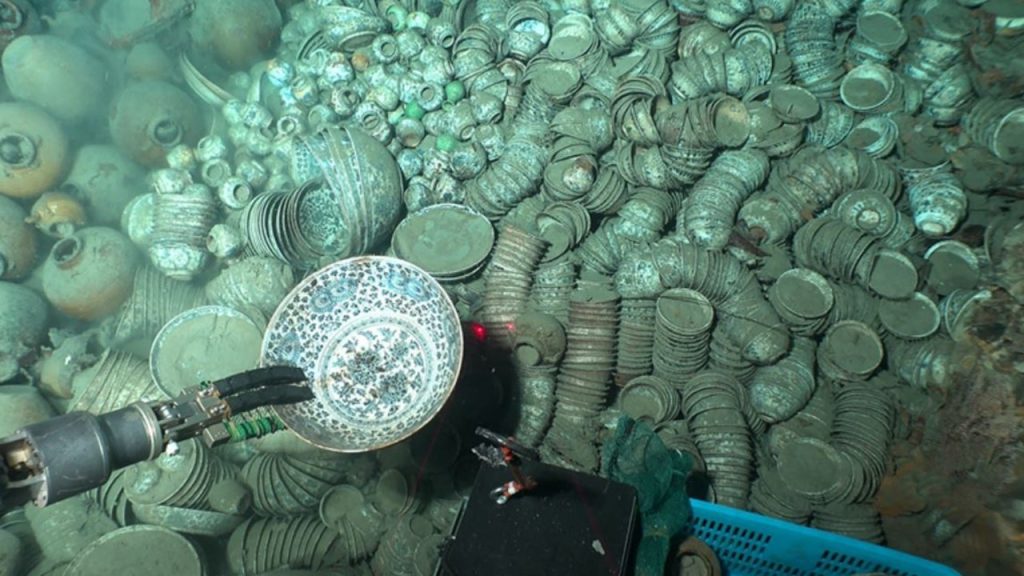The National Cultural Heritage Administration of China announced that nearly 1,000 cultural relics dating back to the Ming Dynasty have been recovered from shipwrecks in the South China Sea. These relics include porcelain and pottery, copper coins, and deer antlers, indicating that the Ming Dynasty used the South China Sea as an important trade route. The wrecks were first discovered in 2022, 5,000 feet below the surface near the northwest continental slope of the South China Sea. Excavators used the manned Deep Sea Warrior submersible to retrieve the items from the shipwrecks, which were found 10 nautical miles apart.
A total of 890 relics were found in the first shipwreck, primarily consisting of coins, pottery, and porcelain. Another 38 relics were recovered from the second wreck, including pottery, porcelain, turban shells, and lumber. The first ship appeared to mainly export porcelain, while the second ship was involved in importing wood. The relics found are believed to be from the Zhengde period of the Ming Dynasty (1506-1521), with some items possibly dating back to the reign of Emperor Hongzhi (1488-1505). The well-preserved relics are considered to have high historical, scientific, and artistic value, possibly making it a world-class archaeological discovery in the deep sea.
The discovery of these ancient ships is significant as it marks the first time that ships sailing and returning to the same sea area have been discovered in China. The excavation of the shipwrecks is also tied to China’s territorial claims on the South China Sea, particularly through its “nine-dash line” policy, which has been a subject of dispute in international court. The underwater excavation and recovery of these cultural relics shed light on the maritime history of China and its connections to the ancient Maritime Silk Road that once traversed the South China Sea.
The relics recovered from the shipwrecks provide valuable insights into the trade and commerce of the Ming Dynasty, showcasing the exchange of goods such as porcelain, pottery, and other commodities. The meticulous stacking of logs found on one of the ships suggests a well-organized cargo hold, possibly used for transporting goods. The cultural significance of these relics is highlighted by their historical and artistic value, offering a glimpse into the craftsmanship and trade practices of the Ming Dynasty.
The underwater excavation of these shipwrecks represents a groundbreaking archaeological discovery in the deep sea, demonstrating the wealth of cultural heritage that lies beneath the waters of the South China Sea. The recovery of nearly 1,000 relics from the Ming Dynasty period is a testament to the enduring legacy of China’s maritime history and its role in shaping the ancient Silk Road trade routes. The well-preserved nature of these relics opens up new avenues for research and exploration into the maritime connections of the past, providing a window into the cultural exchanges and trade networks of the Ming Dynasty era.


